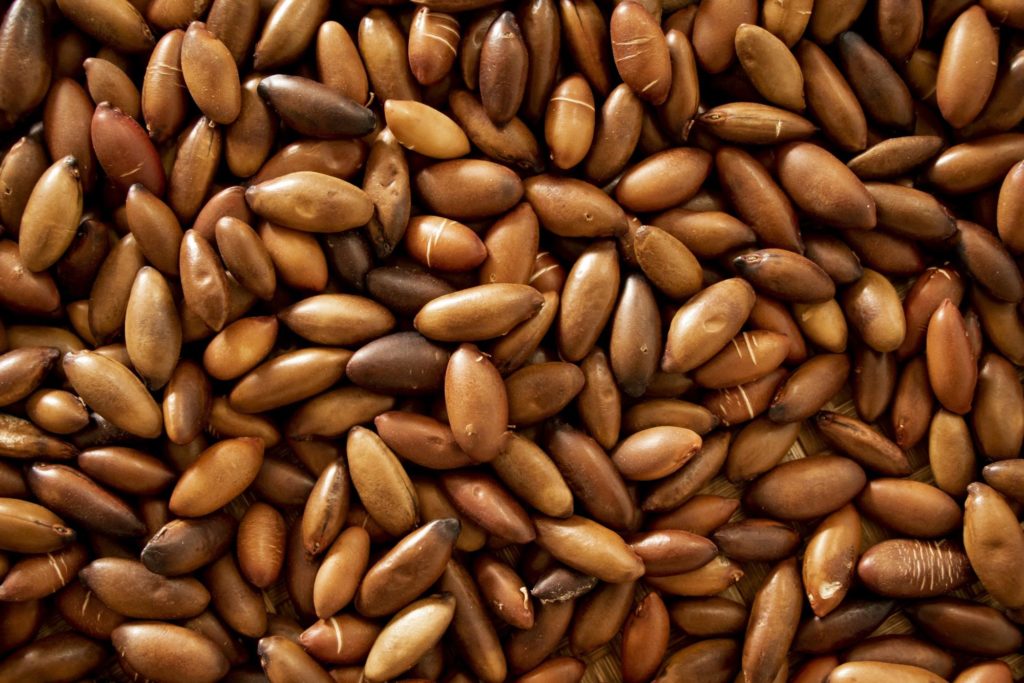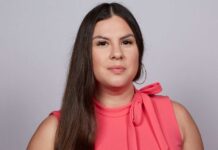Darin Olien is a dedicated superfood hunter, a snappy title a journalist once gave him that seemed to both honor and playfully describe the serious work he has been doing for decades, searching the globe for game-changing botanicals. The title, as it so happens, has stuck.
Olien’s latest and perhaps greatest superfood catch is the baru nut, foraged from the baruzeiro tree in South America’s Cerrado (pronounced se-HAH-doo), a tropical savanna that covers a swath of Brazil a third the size of the United States. He and Barùkas co-founder Rodrigo Figueiredo want to bring this baru nut to the pantries all across the world, believing it has the capacity to supercharge our health and to simultaneously empower the indigenous communities of the Cerrado who forage for this crop each harvest season — all while halting the ecologically devastating clear-cutting of this savanna. And Olien and Figueiredo aren’t taking a penny of profit until they know the business can sustain itself in every respect.
It was on one of his superfood “hunts” that he came across Barùkas, a crop that would eventually become his most transformative venture to date. “I was actually in Brazil looking at different palm fruits in the Amazon, and a Brazilian saw a post that I was in there and asked ‘Do you know the Cerrado? And do you know this baru nut from the baruzeiro tree?’” Olien had never heard of it before. “The beautiful thing about this work is that you can never know it all.”

With a background in physiology and nutrition, Olien has worked in the supplement industry for years, formulating products for brands like Shakeology with ingredients sourced from near and far. The supplement market is notoriously unregulated, making it hard to know what you’re buying, but Olien has always made a point to trace any of his superfoods to their origins in person, to meet the growers, to see the land, to understand what it means to export these crops.
“I started looking at all this stuff because I saw those bad supply chains, the poor quality stuff pop up in the market,” he shared. “The consumer doesn’t know that the quality is [poor].” Lots of these supplements are processed in unsanitary conditions, he says, and there are too many out there that are economically devastating for indigenous and local communities. He mentions the cacao industry of West Africa, where farmers, some of whom are children who have been trafficked, are paid a slave’s wage to satiate the global appetite for chocolate.
Olien’s entrepreneurial instinct is led by something more holistic. “I’m passionate about this shit. And on a deeper level; call it a conscious, spiritual, connected level,” he said. He notes that the baruzeiro tree is sacred to the savanna, a sort of grandfather that sustains and anchors its surrounding ecosystem.

“There’s just something about this tree, there’s just something about this area. This area is like a magical, beautiful area that’s being encroached upon in a really bad way.”
Beyond the tree’s good vibes, he and his team have relied upon the locals and the indigenous communities of the Cerrado to learn everything they can about the baru nuts, combining that knowledge with research at the university level that can contextualize that wisdom in a different way, in a way that superfood consumers can digest.
But first: Does the baru nut taste good? Because if it doesn’t, all bets are off.
Olien’s serious interest in getting involved with the baruzeiro crop was piqued when he had the chance to eat the nut. Based on the flavor alone, he knew it had some retail potential that was worth exploring. “Is this a great product for the normal consumer in America? Yes, because it tastes so good.” Olien likened the flavor of the baru nuts, what he calls Barùkas, to that of peanuts with a toasty popcorn note; having tried them myself, I would say this description is spot on. They’re less oily than peanuts, being lower in fat, so the Barùkas are a bit drier in texture, crunchier, maybe more like a toasted almond.
But from a production standpoint, if we’re comparing Barùkas to almonds, the two nuts couldn’t be more different. Almonds require an extraordinary and unsustainable input of water, which many of us already know, but Olien also pointed out that growing almonds requires farmers to jump through so many other hoops that aren’t in balance with nature: for example, transporting bees across the country to almond orchards, which of course disrupts the natural balance of other ecosystems that rely upon these pollinators too. A monocrop like almonds (as opposed to a crop that can thrive among fauna, wild vegetation, and crops) also requires external components like pesticides, fungicides, and herbicides to keep it from getting overtaken by the native plants and wildlife.
As a foraged and indigenous crop, in contrast, Barùkas require none of these inputs, no external water — in essence, no farming whatsoever. As long as the Cerrado is there for the tree, the baruzeiro trees will continue to produce fruit at their own reliable pace. The fruit simply asks our patience: They cannot be plucked early from the tree. When the tree is ready, it will release its grip on the fruit, letting it fall to the ground, where, protected by its hard shell, foragers (whether human or animal) can collect it as they see fit.

Barùkas set themselves apart from the almond (and other nuts) when you look at its nutritional components. A baru nut contains over 350 percent more antioxidants than an almond does according to Olien’s analyses, something that has a lot to do with the fact that the baruzeiro tree is at home in its ideal ecosystem, coexisting with its ideal balance of flora and fauna. “If you have something that’s not a monocrop, it’s in nature, it’s under a stressful situation, it’s adapted to that stressful situation… you’re going to have this huge amount of compounds that are adapting and strengthening the fruit. Therefore, you get this ridiculously high amount of antioxidants,” he explained, noting that the tree has a deep taproot that quenches its thirst from an aquifer beneath the Cerrado; this allows the tree to withstand the region’s massive dry season, one that can last upwards of three-quarters of a year.
You could do a side-by-side comparison with practically any other commercial nut to see why Barùkas is worthy of being called a superfood. For one thing, unlike many other plant-based proteins and nuts, Barùkas are a complete protein — meaning they contain all the amino acids necessary for the human diet; this is a quality that helped make another South American crop, quinoa, a pantry staple.
But wait, there’s more! “You also have at least a third more fiber than any nut, and everybody is low on fiber. Especially the standard American,” observed Olien. Just FYI, we’re supposed to be eating at least 25 to 30 grams of fiber per day, but the average American diet contains too many refined carbs, too much meat, and not enough plant matter, leaving many of us deficient in this essential nutrient.
I could hear the excitement in Olien’s voice as he flooded my brain with information. It’s hard to believe that I’d never heard about Barùkas (let alone the Cerrado) before. Most Brazilians haven’t heard of baru nuts either, since they haven’t been readily available as a consumer product; indigenous communities who live on the Cerrado today don’t really harvest it for food.
But they used to.
“It’s been around for thousands of years,” said Olien, recounting how animals would crack through the hard shell, eat the fruity layer surrounding the nut, and poop out the Barùkas which were indigestible when raw. Roasting the nut, though, allowed the indigenous people on the Cerrado to access the nut as a food. “They would take the ones that would fall and they would throw it around a fire, in its embers. In the morning — they kind of roasted it — they could more easily crack it open and eat the roasted nut inside.”
Modern communities on the Cerrado are no longer using open fires, so they must use a rock or machete to crack open the fruit, just to extract a single nut. “It just became so arduous to do that unless you have the mechanization for it or you’re getting paid for it… in that whole process, the nut was being lost,” said Olien. The time- and labor-intensive aspect of this process inevitably gets reflected in the high price of the nut at local markets, making the commodity impossible to sell in any meaningful way.
Olien and his partners are still fine-tuning the mechanization of this nut-cracking process themselves, one challenge that has prevented other entrepreneurs from commodifying this wild crop, but Barùkas had made it work for now and the company has begun selling the nuts to consumers, ready to eat out of the bag. They have also formulated a trail mix that combines the nut with dried shavings of the not-too-sweet fruit that surrounds it (“It’s almost like a graham cracker, but high in fiber and prebiotic.”), something Olien suggests serving atop your favorite fruit bowl. This year will be Barùkas’s third harvest from the Cerrado.

All this sounds great, but let’s consider some of the issues that many exported superfoods create in their wake: Is the product really good for the local market? Is it good for the communities that grow it? Who benefits from it besides the health-conscious consumer who can afford to purchase it?
“[Barùkas] is all of the things that every farmer on the planet that I’ve ever met always wanted. ‘Let me do my thing and I’ll sell it to you,’” said a confident Olien. “There are so many beautiful spokes to this thing; the thing that I’m always reminded of over the years, is it’s not finding the greatest superfood and bringing it up — although everyone wants to know, the celebrities, the athlete that calls me up and wants the latest and greatest to give them the extra seconds on whatever, and that’s fine, that can move the needle. But for me, each spoke is part of the ‘super’ of it. And Barùkas is absolutely good for the indigenous people.”
Once the Barùkas get a solid foothold in the consumer market and can carve out their place on grocery store shelves in the long run, the indigneous communities on the Cerrado will have consistent, fair wages in a rural region that is economically unable to keep pace with its extra-rural neighbors. With the success of Barùkas, a consistent revenue stream should allow the foragers to keep hold of their land, land that they are apt to sell off to big agricultural buyers when they need the money to care for their families.
Through empowering these individuals, Olien brings me back to the importance of protecting the Cerrado. “It’s an incredible savanna biome that’s intricately connected to the stability of the Amazon. But the Cerrado is like the poor cousin of the Amazon, whereas most of the biomass is below the ground,” he explained. He ventured to say that the Cerrado may have as much biomass as the Amazon per hectare (one hectare is just shy of 2.5 acres). “Clearing the Cerrado for big agriculture is massively destructive, regardless. And clearing the Cerrado is easier to do [than clearing the Amazon], in a sense, because there’s less vegetation above ground. It’s being cleared faster than any landmass in the world. And it’s going on, and no one knows about it. And that is heart-wrenching.”

Barùkas is offering an alternative to this future by incentivizing the indigenous communities to hold onto their land. But Olien emphasized that this is not a “get rich quick” scheme for anyone involved; rather, it’s a steady build toward a sustainable revenue stream for both him and the farmers, something he believes will help protect the Cerrado for years to come.
He contrasted the Barùkas business plan to the NGO model of developing the baru nut. “Guess what happens? People come in, [the communities] get a lot of money, they’re not used to that amount of money, and inevitably things go sideways. Things get corrupt — they’re human, after all — and the project fails. So ‘free’ NGO money… in this situation I can’t tell you how many times I’ve seen this shit happen: It doesn’t work,” he insisted. “If we can come in and say, ‘Listen, we’re not going to pay you $1000 a kilo. But what we’re going to do is understand what’s fair to you and what excites you, and we’re going to be there consistently. And we’re going to pay you that consistently.’ That’s the power in it.”
As a layman, I always thought of NGOs as categorically “good” things, but here Olien spelled out to me why an idea can look great on paper but fail in reality. “There are a lot of great NGOs. It’s not that [their existence] is wrong. But to a certain extent, it’s setting up people to win the lottery without having the economic fortitude to understand that amount of resources and be able to manage that,” he concluded. To determine what would be a fair wage to the communities, Olien and his team interviewed everyone they could meet in the region, people who could eventually become part of their venture.
Beyond wages, Barùkas has also committed to planting new baruzeiro trees in order to reforest parts of the savanna that need this sacred anchor. “For every five pounds we sell of these nuts, we plant a tree. We actually give the seedling back to the indigenous foragers so that they can plant them on their own land.” Within five to ten years, the tree will be mature enough to put out fruit, thereby increasing baru nut harvests. Just for reference, a mature tree puts out about 4000 fruits each year, which weigh in at about 25 grams apiece. About 8-9 grams is the fruit layer, and only 1 gram is the nut itself. The rest is the hard shell.

“We can absolutely and consciously support and defend, in our way, the Cerrado by planting these trees and creating value for the indigenous people,” said Olien, recounting each pillar of business that is important to him. “It has to be good. It has to be better for the environment before we got there. It has to be better for people after they’ve eaten them. It has to be better for the indigenous people that we’re working with.”

“This should be normal business practice,” he emphasized. “Look at our failing systems as we’re sitting there. Every system is shaking at the knees.”
I ask him if replicating this business model with superfoods all around the world is his blueprint for world domination. A noble fantasy, but he humbly defers.
“One of the greatest things and the greatest reasons I do this stuff is finding high quality botanicals, foods, and herbs, getting them to people so they can live great, kick ass, and not suffer. That’s ultimately at the core of why I do it,” Olien revealed. “Ultimately I don’t want to be the greatest ethnobotanist in the world. I just want people to consume foods in their natural states so that they can live their greatest life.”
Get a closer look at Barùkas through their IG account, or to try out the Cerrado-saving superfood for yourself, you can purchase them directly from the company here.
For Image credit or remove please email for immediate removal - info@belatina.com






































